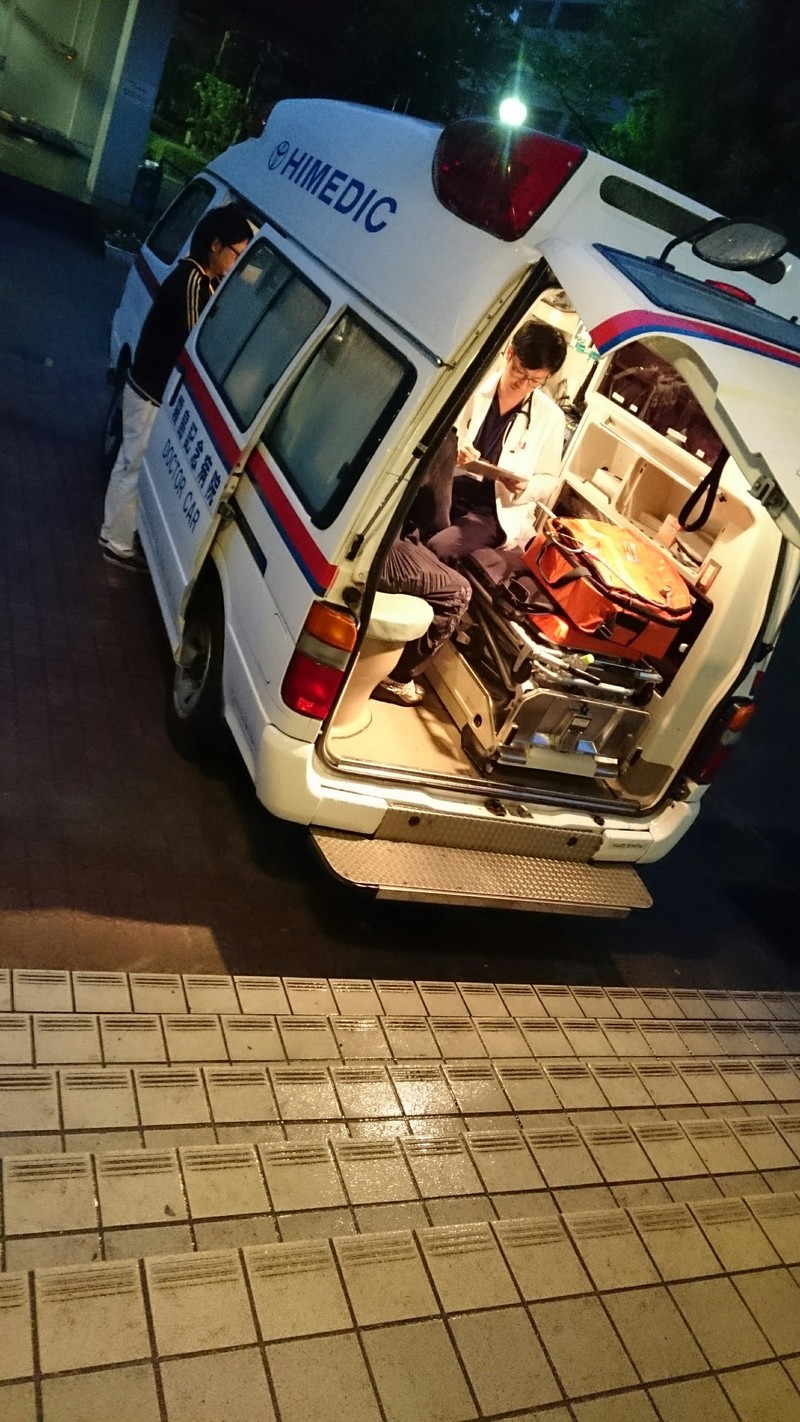Interviews

The Steth♡scope: Bringing Innovation to Telemedicine and Diagnostic Support (Part 1)
Shimpei Ogawa
The Steth♡scope goes beyond what you think of traditional stethoscopes, using AI to analyze EKGs and heartbeats.
Interviewer & Japanese Writer: Yamamoto Takaya; Translation & Editing: Matthew Cherry
Shimpei Ogawa is a doctor with a lot of ambition. With the development of his Super Stethoscope, which includes functionality that goes beyond conventional stethoscopes, he aims to create a revolutionary innovation that will turn the medical field on its head. The device was selected for the 2017 INNO-vation Program’s Disruptive Challenge.
The Super Stethoscope has a much longer technical name: The Heart Disease Diagnostics Assist Function-Equipped Telemedicine-Enabled Stethoscope. While the name may be a mouthful, the device is packed full of features for the heart. The stethoscope measures EKG and heartbeat audio data simultaneously and then runs that data through a unique algorithm to be further processed by artificial intelligence. This in turn provides support for doctors with quick and accurate auscultation while enabling telemedicine capabilities through the transmission of its data.
After graduating from the Faculty of Medicine at Kumamoto University, Dr. Ogawa worked as a cardiologist at a 24-hour acute-care hospital, providing care for acutely and critically ill patients. It was during his time at the hospital that he formulated the idea for the Super Stethoscope.
Hospitals are no strangers to patients under cardiac arrest being rushed to the emergency room. One of the primary factors in these cases is aortic valve stenosis (AS), a heart valve disease in which the opening in the aortic valve has become narrowed. The narrowing caused by AS leads to a hardening of the aortic valve, preventing stable blood flow and leading to heart failure and/or sudden death. The potential number of patients in Japan who will rely on early detection of these kinds of diseases is said to have reached over 1 million people.
“By providing appropriate medical care at the earliest stages, we can prevent the symptoms from turning into a more serious disease,” Dr. Ogawa explained. “I knew there would be a need for an advanced-model stethoscope that would let physicians and doctors perform fast and accurate auscultations.”
Dr. Ogawa founded AMI, Inc. in 2015. Its mission: take technology to the extreme through rapid medical innovation and bring that innovation to the world. It was in this company that he earnestly began his work on the Super Stethoscope.
The following year, the 2016 Kumamoto earthquakes struck Dr. Ogawa’s home prefecture, and he soon volunteered as a doctor to tend to the affected areas. There, he learned of the importance of telemedicine.
Drawing on experience from the 2011 Tōhoku earthquake and tsunami, a medical system focused on DMAT (Disaster Medical Assistance Team) was created for the area. Doctors on-site become worn out after attending to patients’ diagnostics and treatment throughout the day. They have no choice but to rest overnight and continue their work the next day. But in times of emergency, many evacuees don’t reach shelters until well into the night. To combat this, Dr. Ogawa waited on-call in a non-transporting EMS vehicle. A call came in from one patient, but by the time Dr. Ogawa reached the evacuation center, a long line had already formed waiting for treatment.

Dr. Ogawa inside of a non-transporting EMS vehicle
Meanwhile, doctors throughout the country aware of the situation in Kumamoto had been continually reaching out via social media. “What can we do to help?” some posts read. Dr. Ogawa looked back on his experience there. “Of course doctors already in the area will do what they can, but in times like these providing auscultation from a remote distance would allow for proper care in evacuation shelters even throughout the night.”
Although telemedicine will become increasingly important in home care and remote areas with few medical facilities, there’s no denying its necessity in times of disaster. Early detection of abnormalities in the heart and remote medical care: the pillars of the Super Stethoscope were now set in stone.
In Part 2, we’ll ask Dr. Ogawa about his developments within the INNO-vation Program.

Part 2 coming July 4th, 2022
Dr. Shimpei Ogawa’s Profile

